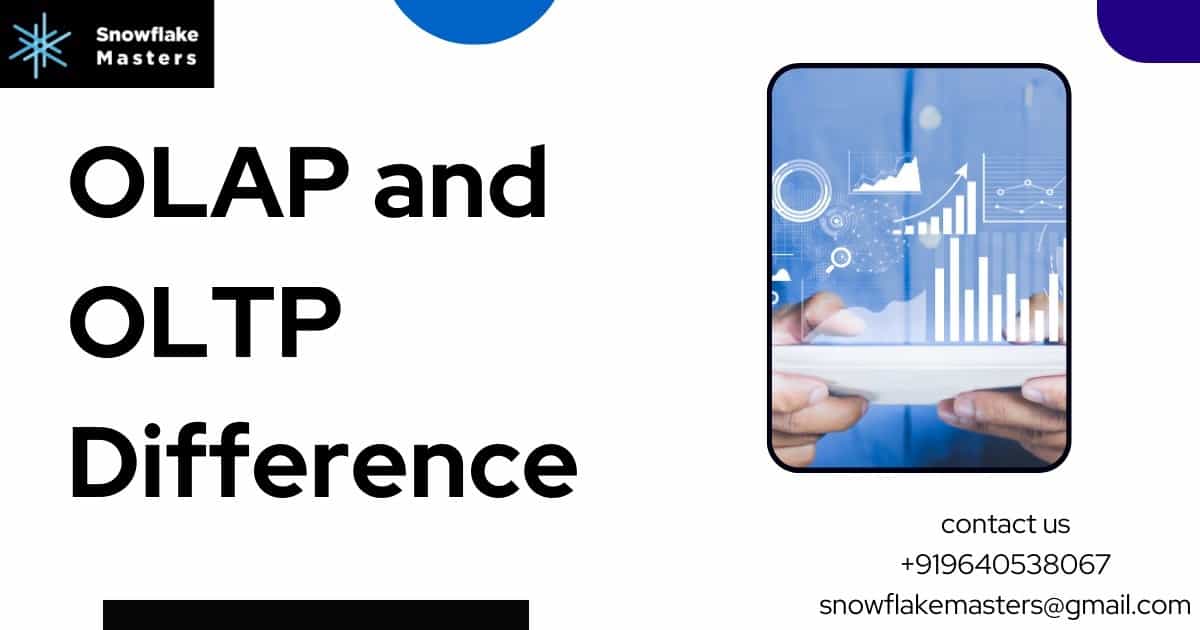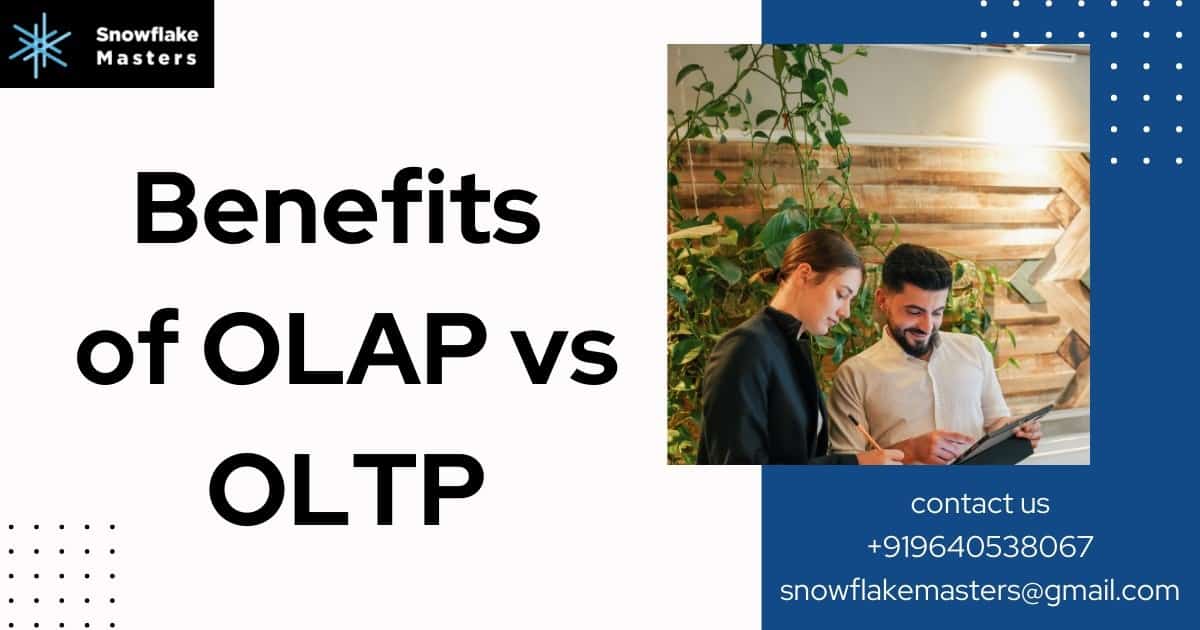OLAP and OLTP Difference

In today's data-driven world, businesses rely on robust database systems to store, manage, and analyze vast amounts of information. Among these systems, OLAP (Online Analytical Processing) and OLTP (Online Transactional Processing) play crucial roles, each serving distinct purposes in database management.
This article aims to uncover the critical variances between OLAP and OLTP, comprehensively understanding their definition, concepts, diverse perspectives, relevant statistics, and real-world examples. By grasping these fundamental differences, organizations can make informed decisions when selecting the most suitable database system to meet their needs.
So, let's dive into the intriguing world of OLAP and OLTP and explore how they shape the landscape of database management.
Table of contents :
- What are OLAP and OLTP
- Key Differences between OLAP and OLTP
- Diverse Perspectives: Industry Applications and Examples
- Relevant Statistics and Research Findings
- Case Studies: Successful Implementations of OLAP and OLTP
- Advantages and Limitations of OLAP and OLTP
- Benefits of OLAP vs OLTP
- OLAP vs OLTP examples
- Factors to Consider in Choosing between OLAP and OLTP
- Conclusion
What are OLAP and OLTP?
- OLAP (Online Analytical Processing):
OLAP, which stands for Online Analytical Processing, is a database technology designed for complex data analysis and reporting. It focuses on providing fast and flexible access to large volumes of historical and aggregated data. OLAP systems are commonly used in business intelligence and data analytics applications, where organizations need to perform various analytical operations, such as data mining, trend analysis, and forecasting.
Unlike OLTP systems, OLAP systems are optimized for read-intensive operations and provide advanced features like multidimensional data models, aggregations, drill-down, and slicing and dicing capabilities. These features allow users to explore data from different dimensions and perspectives, uncover insights, and make informed business decisions.
- OLTP (Online Transactional Processing):
OLTP, which stands for Online Transactional Processing, is a database technology primarily focused on real-time transactional operations. It handles day-to-day transactional tasks such as inserting, updating, and deleting records in a database. OLTP systems are commonly used in applications that require immediate and reliable transaction processing, such as e-commerce platforms, banking systems, and airline reservation systems.
The main characteristics of OLTP systems include high concurrency, low response times, data integrity, and ACID (Atomicity, Consistency, Isolation, Durability) compliance. Unlike OLAP systems optimized for complex analysis, OLTP systems are designed for write-intensive operations, processing numerous small transactions concurrently.
Key Differences between OLAP and OLTP:
- Data Processing Approach: OLAP follows a multidimensional data model, employing queries to analyze and aggregate data from various perspectives. On the other hand, OLTP adopts a relational model, emphasizing real-time transaction processing and maintaining data integrity.
- Database Structure: OLAP systems typically utilize a star, snowflake, or hybrid schema for optimal analytical performance. Conversely, OLTP systems employ normalized schemas to eliminate redundancy and support efficient transactional operations.
- User Interaction: OLAP systems provide a user-friendly interface that enables end-users to interactively navigate and explore data through features like drill-down, slice-and-dice, and pivoting. In contrast, OLTP systems primarily facilitate standard CRUD (Create, Read, Update, Delete) operations, focusing on quick response times for concurrent transactions.
- Performance Requirements: OLAP systems prioritize complex queries and aggregations, often dealing with large datasets. Therefore, they require significant processing power, memory, and storage capabilities. On the other hand, OLTP systems prioritize quick and reliable transaction execution, necessitating high throughput and low response times.
Diverse Perspectives: Industry Applications and Examples:
- OLAP in Business Intelligence: Many enterprises leverage OLAP to gain actionable insights from their operational data, enabling informed decision-making and strategic planning. Companies like Amazon and Walmart utilize OLAP for sales analysis, inventory management, and demand forecasting.
- OLTP in E-commerce: OLTP plays a vital role in e-commerce platforms, facilitating real-time online transactions, inventory management, and secure payment processing. For instance, platforms like eBay and PayPal rely on OLTP systems to handle high volumes of concurrent transactions.
- OLAP vs. OLTP in Finance: In the finance sector, OLAP empowers banks and financial institutions to perform in-depth analysis, risk assessment, and portfolio optimization. In contrast, OLTP ensures secure and accurate execution of financial transactions backed by fraud detection mechanisms.

Relevant Statistics and Research Findings:
According to a report by Gartner, the adoption rate of OLAP and OLTP systems has shown a steady increase in recent years. The survey found that.
- 78% of organizations utilize OLAP systems for complex data analysis.
- 87% of organizations have implemented OLTP systems for day-to-day transactional processing.
Benefits of Leveraging OLAP and OLTP Systems
A study by the International Data Corporation (IDC) highlighted the benefits organizations could experience by effectively leveraging OLAP and OLTP systems. The findings reveal that organizations that harness the power of these systems can achieve :
- Higher profitability: By utilizing OLAP and OLTP systems, organizations can gain valuable insights from historical data, enabling better decision-making and strategic planning. These, in turn, can lead to improved profitability.
- Improved decision-making capabilities: OLAP systems allow users to perform complex analysis, data mining, and trend analysis, providing decision-makers with accurate and timely information. On the other hand, OLTP systems provide real-time transactional processing, enabling immediate and reliable execution of critical business transactions.
Case Studies: Successful Implementations of OLAP and OLTP:
Case Study 1: Company XYZ Improves Decision-Making with OLAP:
Company XYZ, a multinational retail corporation, implemented an OLAP system to analyze sales data across various dimensions. They gained deep insights into customer behaviour, product performance, and market trends using OLAP's drill-down and slice-and-dice capabilities. That empowered the company to make data-driven decisions, leading to optimized inventory management, targeted marketing campaigns, and increased sales revenue.
Case Study 2: E-commerce Platform Boosts Customer Satisfaction with OLTP:
An e-commerce platform faced challenges handling a high volume of transactions, resulting in slow response times and customer dissatisfaction. Implementing a robust OLTP system improved performance, reducing transaction processing time by 50%. As a result, customers experienced seamless purchasing experiences that led to increased customer satisfaction and repeat business.
Advantages and Limitations of OLAP and OLTP:
Advantages of OLAP:
- Powerful data analysis capabilities
- Flexibility in exploring data from multiple perspectives
- Support for complex queries and aggregations
- Decision-making support through insights and patterns
Limitations of OLAP:
- High resource requirements (processing power, memory, storage)
- Longer response times for complex queries
- Limited real-time data availability
Advantages of OLTP:
- Efficient transaction processing
- Data integrity and consistency
- High concurrency support
- Real-time data availability
Limitations of OLTP:
- Limited analytical capabilities
- Difficulty handling complex queries and aggregations
- Higher maintenance overhead for data consistency
Benefits of OLAP vs OLTP :
OLAP and OLTP systems offer distinct benefits for organizations based on their specific needs and use cases.
Benefits of OLAP:
Computational automation: OLAP systems allow for automated processing of complex data structure computations, reducing the need for manual calculations.
Data mining: OLAP systems can extract valuable insights and patterns from large datasets.
Trend analysis: OLAP systems enable organizations to analyze historical data trends and make informed decisions based on past patterns and behaviours.
Benefits of OLTP:
Real-time transaction processing: OLTP systems excel at processing real-time or near real-time transactions, allowing immediate updates and smooth customer interactions.
Efficient handling of large data volumes: OLTP systems are designed to handle high volumes of data efficiently, making them ideal for transactional processing in industries such as retail and finance.
Consistency and data integrity: OLTP systems prioritize maintaining data consistency and integrity, ensuring that transactions are accurately recorded and maintained.
It is vital for organizations to carefully evaluate their specific business requirements, data analysis needs, performance considerations, and scalability requirements to determine the most suitable system for their operations. In some cases, a combination of OLAP and OLTP systems may be ideal, as they serve different purposes and can complement each other to meet various organizational needs.

OLTP vs OLAP examples :
Here are some examples to illustrate the differences between OLTP and OLAP:
OLTP Examples:
E-commerce Platform: An e-commerce website that allows customers to search for products, add items to their cart, and complete purchases is an example of an OLTP system. It processes numerous small transactions in real-time, such as order placement, inventory updates, and payment processing.
Banking System: A banking system that handles daily transactions like deposits, withdrawals, transfers, and balance inquiries is another example of an OLTP system. It ensures the integrity and consistency of financial data across multiple accounts and processes transactions in real-time.
OLAP Examples:
Business Intelligence Reporting: An organization using an OLAP system to generate complex reports and perform data analysis for decision-making purposes exemplifies an OLAP use case. These reports may involve aggregating large volumes of historical sales data, performing trend analysis, and identifying patterns or correlations.
Data Mining and Analytics: A retailer analyzing customer buying patterns, product sales across regions, and customer segmentation using an OLAP system is another example of OLAP usage. That involves querying and analyzing large volumes of data from multiple dimensions to gain insights and make data-driven decisions.
These examples demonstrate how OLTP and OLAP systems serve different purposes in real-world applications, with OLTP handling real-time transactional tasks and OLAP enabling advanced data analysis and reporting.
Factors to Consider in Choosing between OLAP and OLTP:
When deciding between OLAP and OLTP systems, organizations should consider several factors. These factors include:
- Nature of the business: It's essential to understand the heart of the company and the type of data that will be processed. That includes the volume, complexity, and type of data the system will handle.
- Data analysis requirements: Organizations should also consider the type of analysis required, whether it's simple transactional processing or complex data mining and trend analysis.
- Performance needs: Performance is a critical factor to consider based on the size of the data that needs to be processed, as this significantly impacts the processing speed of the system.
- Scalability: Organizations should consider if the system is scalable and can accommodate future needs as a business grows.
It's essential to assess the specific goals and objectives when deciding between OLAP and OLTP systems. While an organization might require OLAP systems for complex data analysis, it might also need OLTP systems for day-to-day transactional processing. Therefore, combining both methods may be an ideal solution for meeting different needs. Careful consideration of these factors can lead to selecting the right system that suits an organization's needs, leading to optimal utilization of resources and increased efficiency.
Conclusion:
In conclusion, understanding the critical variances between OLAP and OLTP is essential for organizations seeking to leverage database systems effectively. Whether making strategic decisions based on historical data or processing real-time transactions, selecting the appropriate system can significantly impact a company's success.
By considering diverse perspectives, analyzing relevant statistics, and exploring real-world case studies, businesses can confidently choose between OLAP and OLTP to maximize the value of their data.
Frequently asked questions about the difference between OLAP and OLTP :
OLAP is an online analytical processing system designed for complex data analysis, while OLTP is an online transactional processing system focused on real-time transactional operations.
OLAP follows a multidimensional data model and analyzes data through queries, while OLTP uses a relational model and emphasizes real-time transaction processing.
OLAP systems typically use star, snowflake, or hybrid schemas for analytical performance, while OLTP systems employ normalized schemas to eliminate redundancy and support efficient transactions.
OLAP systems provide interactive features like drill-down, slice-and-dice, and pivoting for exploring data. OLTP systems facilitate standard CRUD (Create, Read, Update, Delete) operations for quick transaction processing.
OLAP systems require significant processing power, memory, and storage capabilities to handle complex queries and large datasets. OLTP systems prioritize high throughput and low response times for quick and reliable transaction execution.
OLAP is widely used in business intelligence, finance, and sales analysis. OLTP is essential in e-commerce, banking, and any industry needing real-time transaction processing.
According to Gartner, the adoption rate of OLAP is 78%, while OLTP stands at 87% in organizations. A study by IDC suggests that effectively leveraging OLAP and OLTP systems increases profitability and improves decision-making capabilities.
Company XYZ improved decision-making using OLAP by analyzing sales data, while an e-commerce platform boosted customer satisfaction using OLTP for real-time transactions.
OLAP offers powerful data analysis capabilities, flexibility in exploring data from multiple perspectives, support for complex queries and aggregations, and decision-making support through insights and patterns.
OLTP provides efficient transaction processing, ensures data integrity and consistency, supports high concurrency, and offers real-time data availability.
